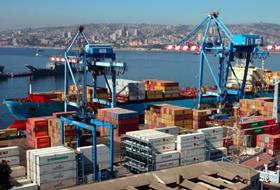
Latin American countries struggling to contain the spread of coronavirus are facing a series of logistical challenges that are hampering fruit exports in the region according to a new report from Tridge.
The company has identified port congestion and the lack of refrigerated containers as the two biggest issues currently facing exporters.
“When China closed its borders for trade in January, containers piled up in major ports, and a shortage in personnel prevented containers from being unloaded and sanitised quickly,” the report said.
It notes that as China resumes operations the accumulation of goods at destination ports as Latin American countries start to quarantine could create further problems in the future.
“In Chile, Chinese traders have not been able to provide required documentation for containers to return to Chilean ports, delaying container shipments by as much as 5-12 days,
“Chile has made efforts to be more flexible, allowing digital documentation. Documentation standards have also become less strict in order to prevent further delays in imports and allow exporters to have more time to send additional information,” the report states.
The lack of availability of containers in Colombia has also resulted in orders by sea being cancelled, which is expected to create more demand for airfreight, Tridge said.
Like Chile, the Colombian Institute of Agriculture (ICA) has decided to loosen regulations for importing goods to ensure adequate supplies of food imports, allowing PDF copies of required documentation for imports to be presented instead of a physical copy until 30 April.
While container prices are relatively stable in Peru, some carriers are charging an extra US$1,100-US$1,500 per container if it is heading to China.
“Logistics costs for shipments to Europe have also increased –sea freights to the Netherlands, for example, are normally around US$1,000 but are now up to US$1,300,” Tridge noted.
The company reports that Peru’s National Agricultural Health Service (Senasa) has also requested exporters to notify them in advance as all exports are subject to inspections.
“There has been uncertainty with exports as clients have been unable to confirm whether they will be able to receive shipments. This has led exporters to redirect containers in transit to other customers at lower prices.”
Tridge noted that while there is currently not a shortage of empty containers in Peru, scarcity is expected to become an issue from April to May for exporters, as the harvest season for fruits begins.
Mexico, meanwhile, is facing difficulties in delivering products like mangoes to shipping ports.
“In addition, very few logistics companies are offering their shipping services, and those that are have limited the export volume,” Tridge said.
“High demand for local fruits and vegetables from European, Middle Eastern, and Asian countries, combined with the lack of operational logistics companies, has caused a 300 per cent increase in airfreight fees.”
Argentine exporters also face disruption because of unresponsive shipping companies dealing with staff shortages, the suspension of most domestic fights and low availability of trucks to transport goods.



